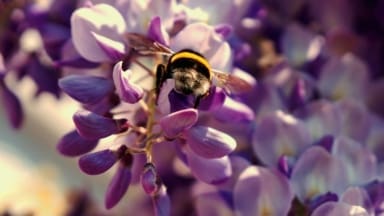
Organised by the IVN Natuureducatie, Stichting LandschappenNL, Natuur & Milieu en Naturalis Biodiversity Center, the Dutch are counting bees for their annual National Bee Count (National Bijentelling). By means of the ten day, bee count in April, researchers hope to ascertain the population health, status and prevalence of the 360 wild bee species that occur in the Netherlands.
Koos Biesmeijer, the Naturalis bee expert said, “The annual garden count contributes to the research into the wild bees in the Netherlands. It gives us new insights into population differences across regions and of urban versus countryside numbers” Biesmeijer indicates that they will need at least 5 annual counts, to have clear indication ascertain a clear picture of wild bee populations. In 2023, more than 3,700 people participated in the National Bee Count, counting more than 75,000 bees and drone flies.
According to their live 2024 bee count data to date, the most prevalent bees occurring in the Netherlands are:
- Honey Bee (Apis mellifera)
- European orchard bee (Osmia Cornuta)
- White-tailed bumblebee (Bombus lucorum)/Buff-tailed bumblebee (Bombus terrestris)
- Red Mason Bee (Osmia bicornis)
- Common Carder Bee (Bombus pascuorum)
- Garden Bumblebee (Bombus hortorum)
- Droneflies (Eristalis species)
- Hairy-footed flower bee (Anthophora plumipes)
- Tree bumblebees (Bombus hypnorum)
- Tawny Mining Bee – Andrena fulva
As is unfortunately the case in many countries, wild bee populations in the Netherlands are under pressure. A reported 34 are extinct in the Netherlands, and more than half of all their bee species are on the endangered list.

